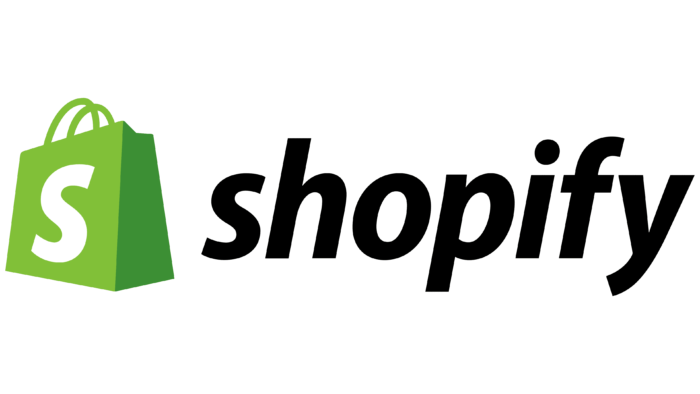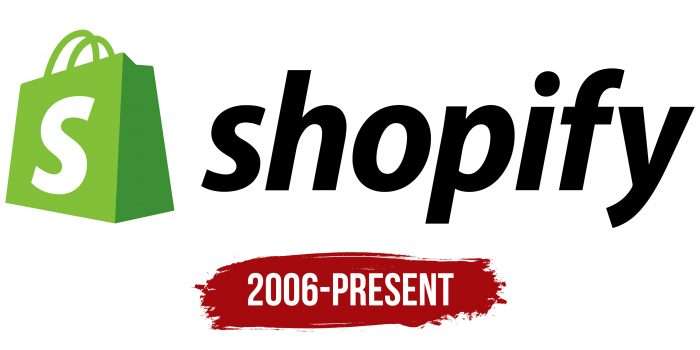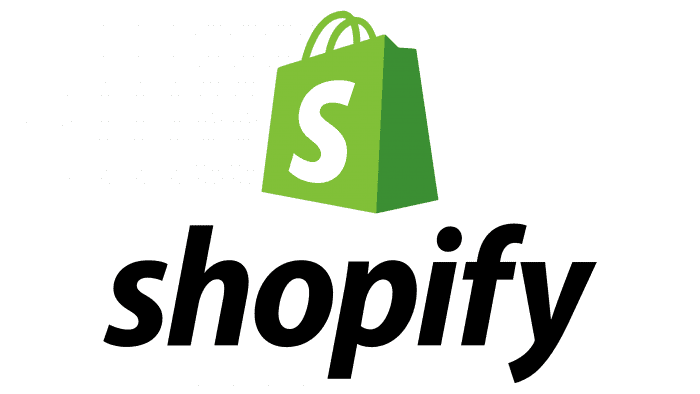Successful purchases are encrypted in the platform emblem. The Shopify logo shows: no one will walk away empty-handed. The site is constantly growing and developing, opening stores in various directions, which is demonstrated by the symbols of the visual sign.
Shopify: Brand overview
| Founded: | 2006 |
| Founder: | Tobias Lütke, Daniel Weinand, Scott Lake |
| Headquarters: | Ottawa, Ontario, Canada |
| Website: | shopify.com |
Meaning and History
It all started with a desire to sell snowboards and equipment for them. For this, the friends founded their Snowdevil shop. They decided to involve the Internet in the process but did not find a convenient place for trading. As a result, Tobias Lütke, a programmer by profession, developed an Internet platform from scratch. He used one of the open-source programs and launched the project within two months. Then, in 2006, friends started a service called Shopify. The work on it is organized so that store owners can manage them even from mobile devices.
Then the commercial platform took off. Taking part in a serious entrepreneurial competition, the developers began to receive capital funding and grants from the largest business figures. The progress was so powerful and rapid that in the 2010 Ottawa Business Journal named Shopify the fastest-growing company in the region.
What is Shopify?
It is a Canadian software and visual identity company for retail and online stores. It has existed since 2004.
Shopify consolidated with Amazon and began to expand across the planet. In the face of the COVID-19 pandemic, the web service has received another boost to expansion, as isolation has forced entrepreneurs worldwide to go online and boost online sales. In this regard, the trading platform has expanded its staff and implemented software support for everyone who wants to open a business on the Web.
The Shopify logo appeared immediately at the site’s launch after the buddies opened their store selling snowboarding equipment online. This happened two years later – in 2006.
Since all the developers’ attention was focused on the engine and convenience for sellers and buyers, the logo was not given much importance. For the creators, it was more important to have it to designate the site. Based on this, the logo had to be as thematic as possible. The web resource’s focus immediately became clear and simple not to overload the site with unnecessary details, ensuring easy loading.
The logo contains an image of a grocery bag, which is located on a white background. The text part consists of a single letter. The bag is very large, which demonstrates the capabilities of the commercial platform. It is turned half-sided, so it does not look flat. The front is light, with a large “S” – the first character from the word “Shopify,” which replaces the long name. The side zone is slightly darker. There are also two narrow semicircular handles. Next to the bag is the expanded name of the network.
Shopify: Interesting Facts
Shopify started as a small online store in Canada and has become one of the top e-commerce platforms globally.
- Beginnings: In 2006, Tobias Lütke, Daniel Weinand, and Scott Lake created Shopify out of frustration with the available e-commerce tools while trying to start an online snowboard shop.
- Growth: Shopify now supports over 1.7 million businesses worldwide, providing tools for payments, marketing, shipping, and customer engagement to help small stores thrive online.
- Going Public: In May 2015, Shopify launched its IPO on the New York and Toronto Stock Exchanges, raising over $131 million.
- Shopify Plus: Shopify’s premium service offers more features and dedicated support for large businesses. Big names like Tesla and the New York Times use it.
- Economic Influence: Between 2016 and 2019, Shopify generated over $307 billion in worldwide economic activity, which shows its significant economic impact.
- Innovations: Shopify keeps leading in e-commerce innovation, with features like augmented reality shopping and the Shop app for tracking packages and finding new products.
- Environmental Efforts: Shopify also focuses on sustainability, investing at least $5 million yearly into projects to fight climate change.
- Financial Support: With Shopify Capital, the company provides loans and cash advances to help merchants grow, totaling over $2 billion in funding.
- Global with Local Touch: Shopify supports many languages, currencies, and payment methods, making it versatile for global use and locally adaptable.
- COVID-19 Support: Shopify helped businesses move online quickly during the pandemic by offering extended free trials and funding.
- Community Events: Shopify Unite is an annual conference for partners and developers, which went online as Shopify Reunite during the pandemic.
In short, Shopify’s journey is about providing the tools and support needed for businesses to thrive in the e-commerce space. It emphasizes innovation, economic impact, and community support while strongly committed to environmental sustainability.
Font and Colors
For the text in its logo, the company chose a typeface from the Sans Serif category. It resembles the Helvetica Neue font as much as possible, with which it has only one difference: instead of a square above the “i,” a neat round dot is used.
Despite the minimalism of the logo, its palette includes four colors: Black (# 000000), White (#FFFFF), and two shades of green – Android Green (# 95BF47), Palm Leaf (# 64943E).
FAQ
What is Shopify branding?
Shopify branding aims to create a strong, recognizable image that captures customer attention and keeps them engaged. The brand has a consistent visual and verbal identity, which helps it stand out.
The logo is simple and modern, featuring a shopping bag icon. The color palette includes green, symbolizing growth, trust, stability, and neutral tones for balance.
The brand uses clean, modern typography. The sans-serif fonts are easy to read across different devices and platforms.
The website and user interface are user-friendly and visually appealing. The clean layout, intuitive navigation, high-quality images, and consistent color scheme reinforce the brand’s identity.
Marketing efforts target potential users who would benefit from the platform. The brand uses digital marketing, content marketing, and partnerships to spread awareness and attract new customers. Their advertising highlights success stories and testimonials, showcasing the platform’s benefits.
Can you create a logo on Shopify?
You can create a logo using their built-in tools. The process is simple and allows you to design a professional logo that fits your business needs. Here’s how to do it:
- Access the Logo Maker Tool
- Go to the Shopify website and find the logo maker tool. It is user-friendly and helps you create a logo quickly.
- Enter Your Business Information
- Provide your company’s name, type of business, and slogan if you have one. This information helps the tool create logo designs that match your brand.
- Choose Your Design Preferences
- Pick design elements that fit your style. You can choose icons, fonts, and color schemes. The tool will show you different options based on your choices to see how each element looks together.
- Review the Generated Options
- Look through the logo options the tool creates. Choose the one that best represents your business and appeals to your audience.
- Customize Your Logo
- You can adjust the colors, fonts, and layout to fit your vision. The tool lets you make changes until you are satisfied with the design.
- Finalize and Download
- Once you are happy with your logo, finalize and download the design. The tool provides high-resolution files you can use on different platforms and materials.
Is the Shopify logo free?
Yes, Shopify’s logo design tool is free to use. You can create a logo without any cost. Here’s how it works:
Enter your business details, such as your company name and type of business. This helps the tool generate logos that fit your brand.
You can select your design preferences, such as icons, fonts, and colors. The tool will then show you different logo options based on your choices.
Review the generated logos and select the one that best suits your business. If necessary, customize it to match your vision.
Once you are happy with the design, download the high-resolution files. The logo is free to use on various platforms and marketing materials.
Shopify’s logo maker lets you create and customize your logo for free.
How do I make a free Hatcher logo?
To make a free Hatcher logo on Shopify, follow these steps:
- Access the Logo Maker
- Go to the Shopify website and find the Hatcher logo maker tool. It is easy to use and helps you create a logo quickly.
- Enter Your Business Information
- Input your company’s name and slogan. This information helps the tool create logo designs that fit your brand.
- Choose a Design Template
- Browse the library of templates in the logo maker. Select a design that matches your brand’s style and message.
- Customize the Design
- Adjust the colors to match your brand’s color scheme. Modify the fonts to ensure they are readable and convey the right tone. Tweak the design and layout to fit your vision.
- Review and Finalize
- Once you customize the logo, review the final design. Ensure it represents your brand well and meets your business needs.
- Download the Logo
- After finalizing the design, download the high-resolution files. Use these files across various platforms and marketing materials to keep your brand’s visual identity consistent.
This tool is a great resource for businesses looking to build a strong brand identity without spending much money. The process is simple and user-friendly, even for those without design experience.






